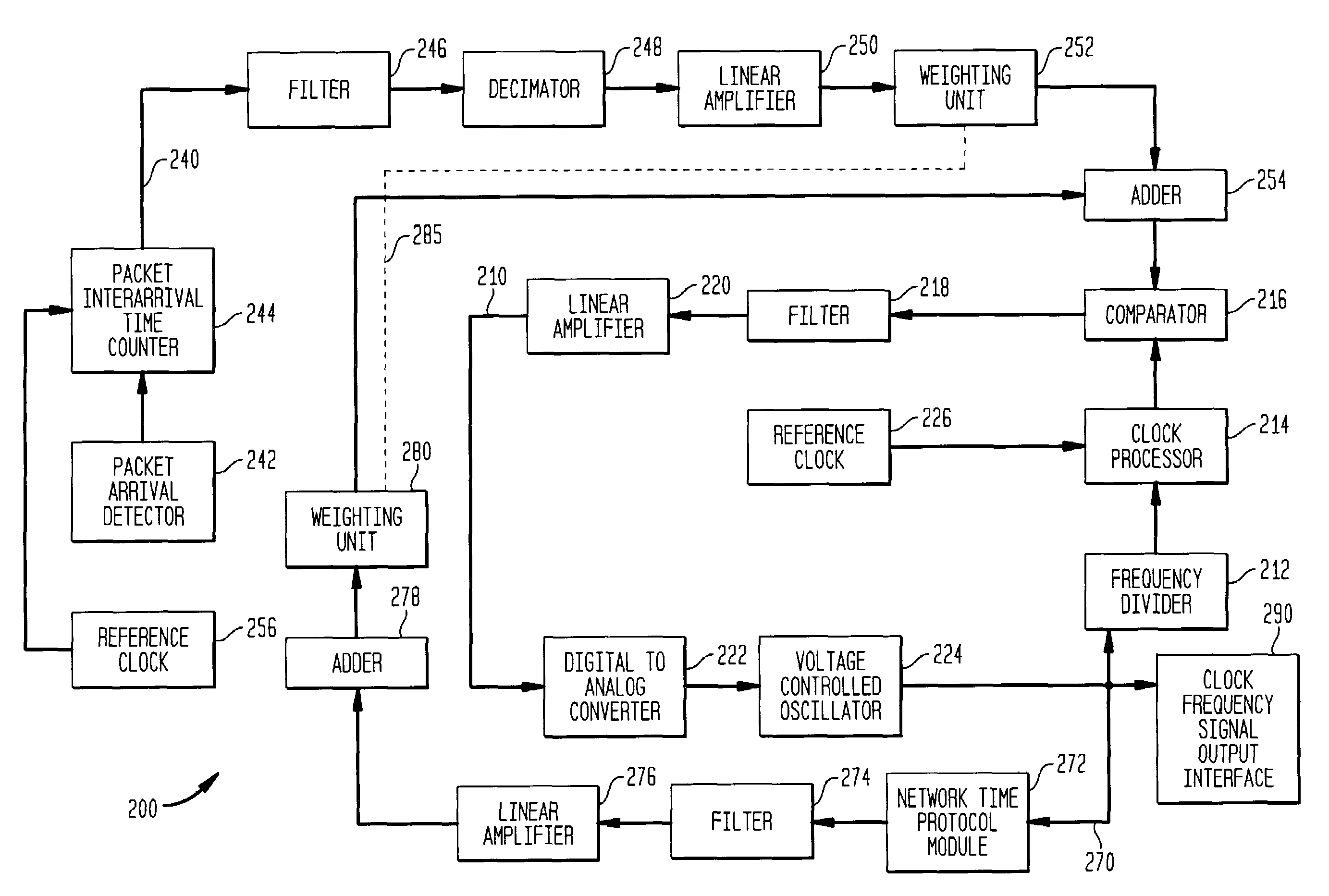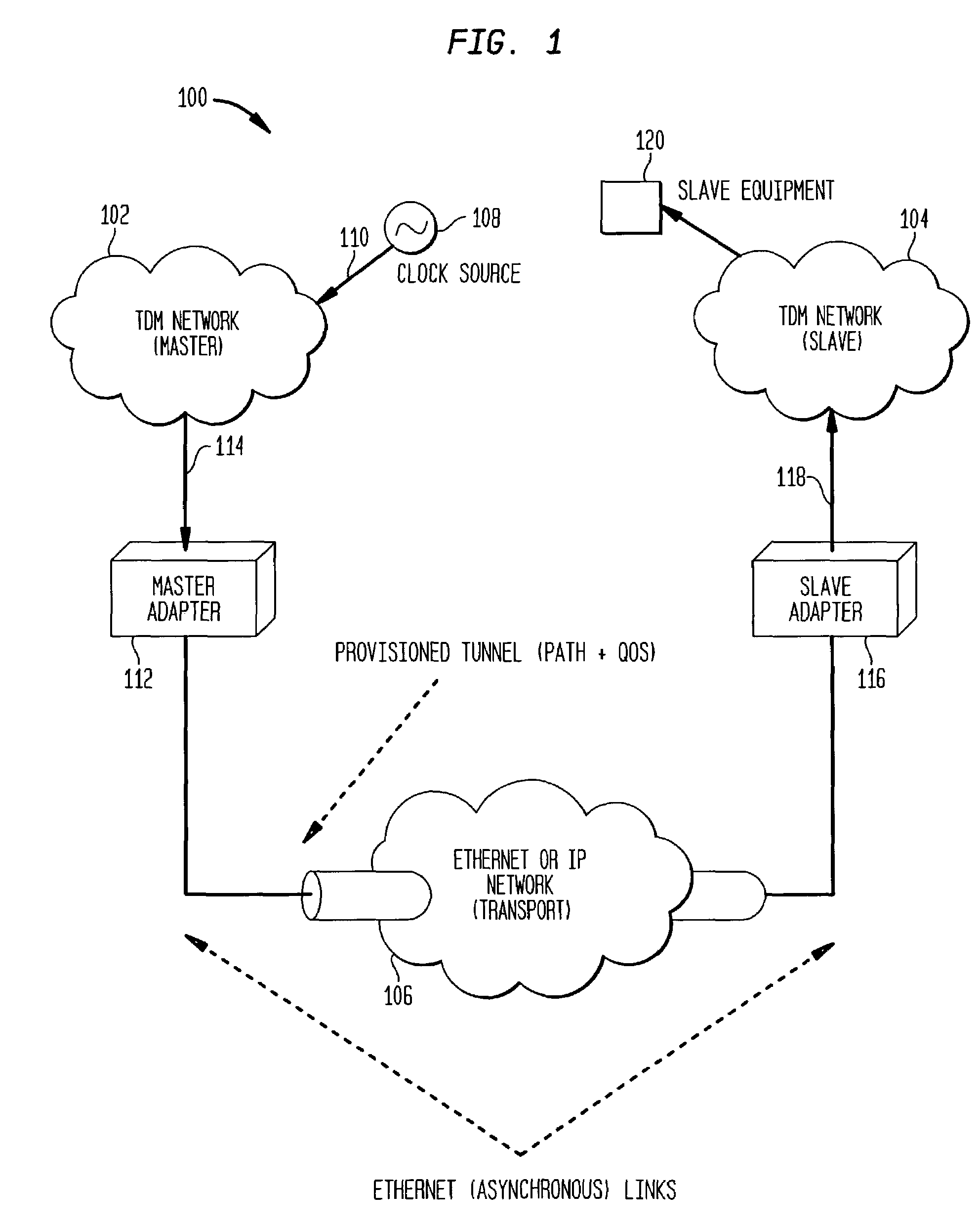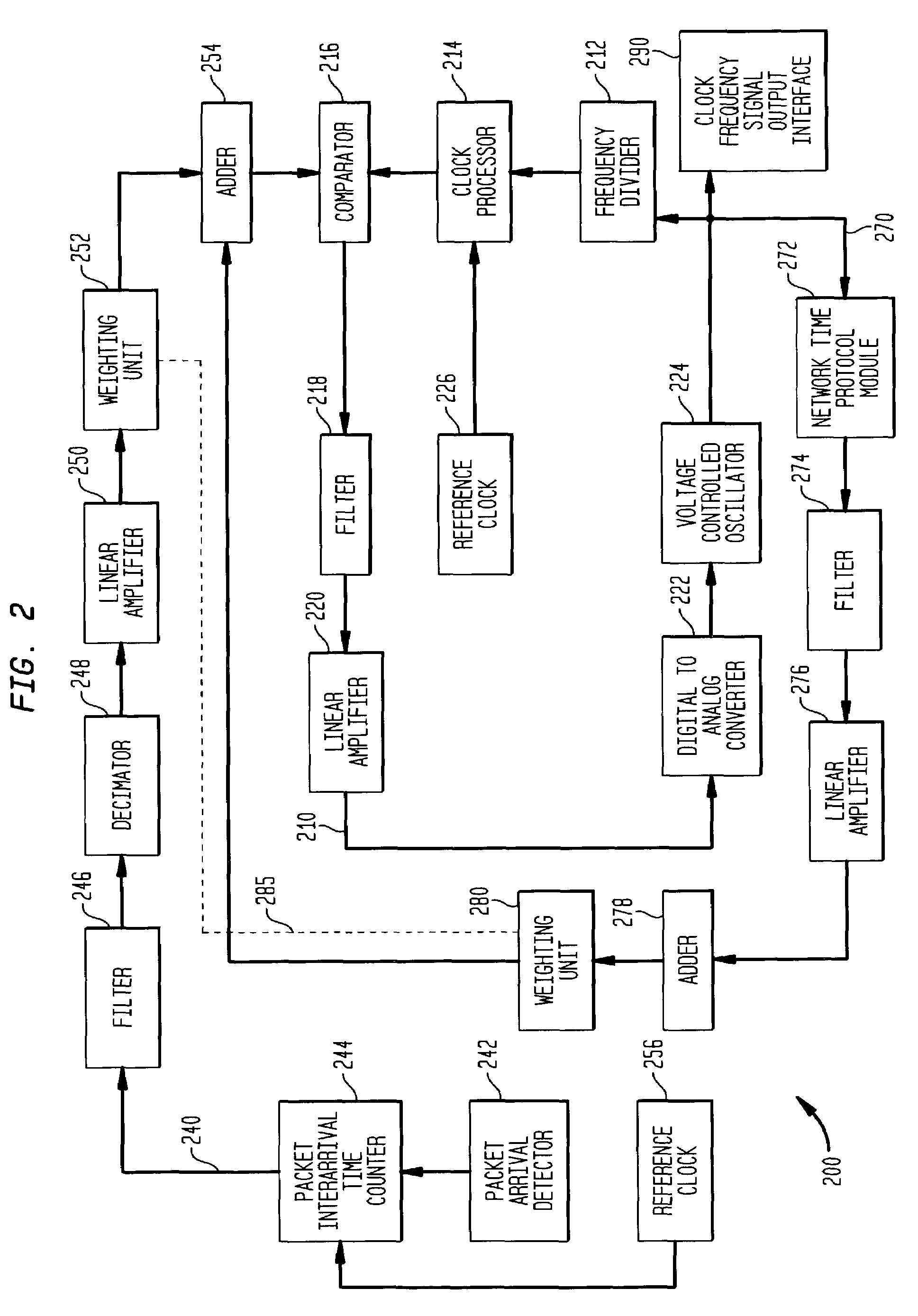Systems and methods for synchronization in asynchronous transport networks
a technology of asynchronous transport and system, applied in the field of asynchronous transport networks, can solve the problems of high equipment and operation costs, poor resource utilization, and the inability to support legacy applications, and achieve the effect of cost saving and efficiencies
- Summary
- Abstract
- Description
- Claims
- Application Information
AI Technical Summary
Benefits of technology
Problems solved by technology
Method used
Image
Examples
Embodiment Construction
[0052]An important motivation for synchronous circuit emulation over asynchronous transport networks such as Ethernet systems at the MAN carrier level is the need for such an asynchronous carrier to support legacy TDM applications. Providing TDM services to an enterprise PBX has a substantial practical value at this time, but the concept can also be adapted to address carrier level access services such as SONET over Ethernet and ultimately synchronous carrier interconnections over any asynchronous transport network. Besides telephone service, there are many data applications still in operation that depend on TDM service, including, for example, frame relay services and private line connections such as full or fractional T1 and T3 point-to-point data connections. The ability to synchronize a local clock to the network with a high degree of accuracy is required by all equipment used in these applications.
[0053]Although migrating these applications to use asynchronous transmission tech...
PUM
 Login to View More
Login to View More Abstract
Description
Claims
Application Information
 Login to View More
Login to View More - R&D
- Intellectual Property
- Life Sciences
- Materials
- Tech Scout
- Unparalleled Data Quality
- Higher Quality Content
- 60% Fewer Hallucinations
Browse by: Latest US Patents, China's latest patents, Technical Efficacy Thesaurus, Application Domain, Technology Topic, Popular Technical Reports.
© 2025 PatSnap. All rights reserved.Legal|Privacy policy|Modern Slavery Act Transparency Statement|Sitemap|About US| Contact US: help@patsnap.com



